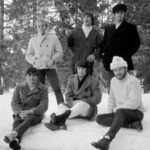Paul McCartney’s bass playing is iconic, instantly recognizable, and utterly foundational to the sound of The Beatles and his subsequent solo work. While his songwriting prowess is often lauded – particularly for, yes, even “Silly Love Songs” – the innovative and meticulous approach he brought to the bass guitar is equally deserving of attention. Forget simplistic notions of pop bass lines; McCartney redefined the instrument’s role in popular music, employing studio wizardry and a relentless pursuit of sonic perfection.
Contrary to popular assumptions fueled by carefully curated band imagery, McCartney’s sound wasn’t solely reliant on readily endorsed equipment. While visually associated with Vox, the reality in the studio was far more diverse. Fender amps and guitars, often unseen in publicity shots, were integral to crafting the Beatles’ sound. That shimmering twelve-string guitar sound in “Nowhere Man”? Likely a pair of Strats, not a Rickenbacker twelve-string as one might expect. The Beatles, visual innovators, understood image, but sonically, they prioritized what worked best.
This pragmatic approach extended to McCartney’s bass. The myth of solely using his Höfner violin bass is easily dispelled. He was an early adopter of direct injection (DI), a technique revealed to involve EMI home-brew transformer boxes – possibly utilizing budget-friendly yet sonically interesting transformers. Even post-Beatles, McCartney has alluded to plugging “directly into the back of the tape machine,” highlighting his direct approach to capturing bass tones.
Expense was no object when it came to achieving the desired sound. Top-tier preamps and compressors, like the coveted Fairchild, were readily employed. If McCartney envisioned a particular sonic texture, the tools to realize it were made available. His techniques were equally varied: fingers, pick, and even black nylon-covered strings – whatever served the music. He was at the forefront of pop and rock innovation, constantly pushing sonic boundaries.
Doubling bass lines was a frequent studio technique for McCartney, sometimes utilizing different basses to add depth and texture. The less-celebrated Fender Bass VI, a six-string bass, made appearances on Beatles recordings, often doubling the more familiar Hofner or Rickenbacker to enrich the lower frequencies. String choice itself was a crucial element, with premium brands like Pyramids and Rotosounds often favored for their tonal characteristics.
It’s also important to acknowledge the support system McCartney had in place. With a dedicated guitar tech, the minutiae of equipment and setup were likely handled, freeing McCartney to focus on performance and artistic vision. Artists, after all, aren’t always consumed with the technical specifics; their primary focus is creation. And let’s not discount the subtle yet impactful use of alternate tunings and tape varispeed, further expanding his sonic palette.
Ultimately, Paul McCartney’s genius lies not just in his melodic gift, evident in everything from rock anthems to “silly love songs,” but in his groundbreaking approach to the bass guitar. He sculpted its sound, redefined its role, and created bass lines so ingrained in our musical consciousness that they can almost sound “ordinary” – until you attempt to replicate their magic. Many experts still debate the specifics of his gear and recording methods, but one thing remains clear: it’s McCartney’s artistic vision, his innate musicality, that truly defines his signature bass sound, elevating even the simplest of songs to something extraordinary.

